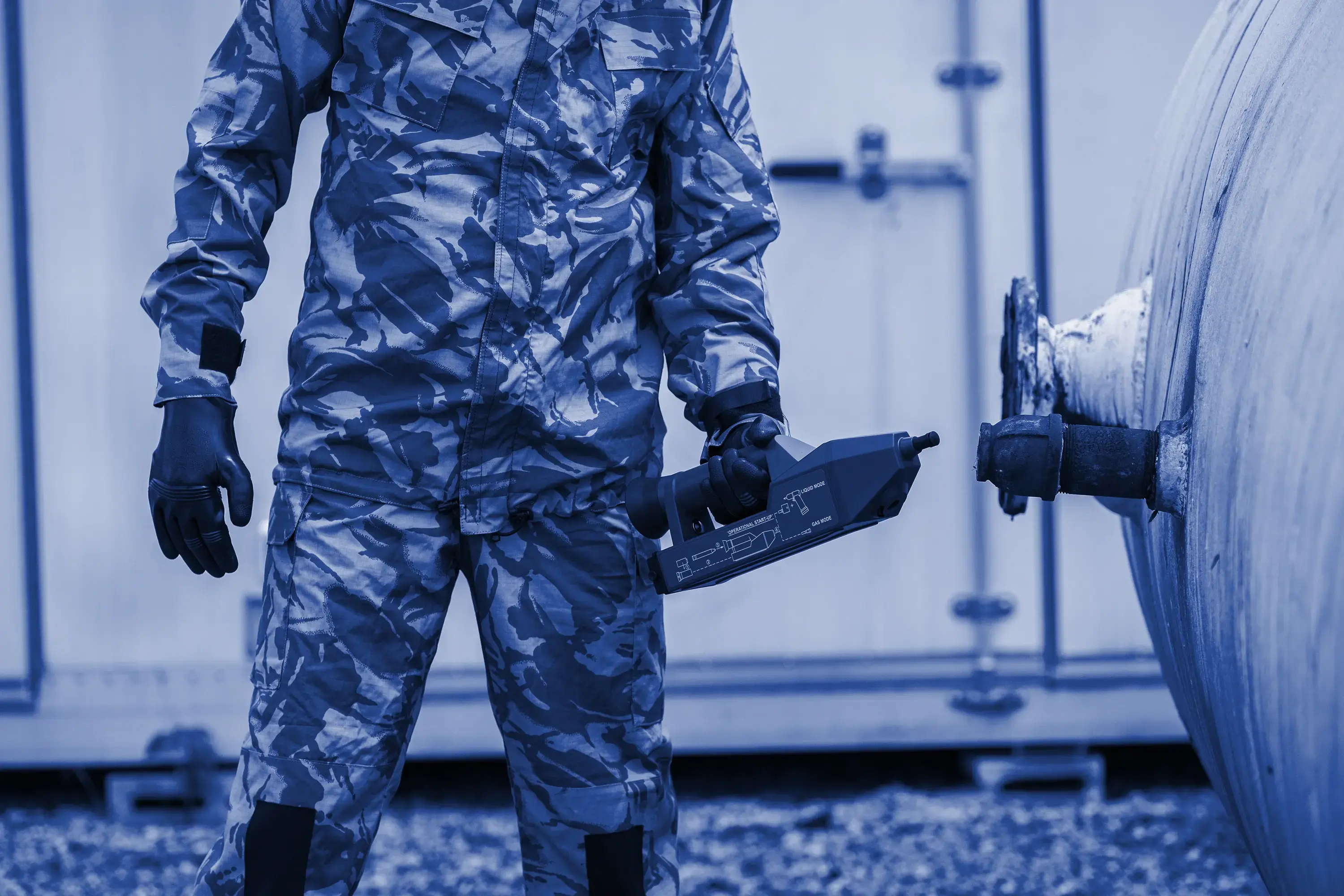$
How Modern Weapons and Non-Traditional Agents Redefine Chemical Warfare.
Proengin

From Gas to New generation Agents
Since the first chlorine attacks in World War I, Chemical Warfare Agents (CWAs) have evolved in form, lethality, and tactics. What began as gases for battlefield denial and mass casualties has progressed to liquids, sticky residues, solids, aerosols, and vapors, expanding the risk landscape for forces.
A critical milestone in this evolution was the Foliant program (1970–1990), a Soviet initiative aimed at developing new-generation nerve agents, now known as Novichoks (A-series agents or Fourth-Generation Agents). Designed to be more potent, persistent, and harder to detect, representing a shift toward non-traditional agents capable of evading conventional detection and complicating decontamination efforts. NTA (Non-Traditional Agents) such as Pharmaceutical-Based Agents (PBAs) and Toxic Industrial Chemicals (TICs) continue to expand the arsenal of modern weapons leveraging chemical threats in asymmetric warfare.
Chemical Weapons in Conflicts: From WWI to Modern Battlefields
Chlorine gas was first used in 1915 in Belgium, marking the beginning of chemical warfare for mass casualties and area denial during WWI. The use of chemical weapons was officially banned under the 1925 Geneva Protocol, reinforced by the Chemical Weapons Convention (CWC) of 1993 under the Organisation for the Prohibition of Chemical Weapons (OPCW), prohibiting the use of CWAs on the battlefield.
Despite these international efforts, chemical weapons continue to surface in conflicts:
- Iraq (2007): Chlorine attacks targeted civilians and security forces.
- Syria (2013–present): Use of sarin, chlorine, and sulfur mustard has been reported.
- Ukraine (2022–2025): Use of chloropicrin (CS) and other chemical agents in the conflict between Russia and Ukraine, with OPCW investigations underway to assess compliance with international law.
These examples illustrate that CWAs remain a threat on modern battlefields, evolving in form and tactics while challenging global security frameworks.
Modern Weapons, new threats for military forces
Military and special forces continue to face persistent CBRN threats on the ground. Among these evolving threats, there is also an increasing concern for biological threats, which add complexity to operational environments. Modern threats include the deliberate use of pharmaceutical (PBAs and Novichoks) and industrial agents to cause harm, alongside a rising risk of aerosolized attacks that enable wider and faster dispersion. Even small quantities can inflict significant damage, while the risks of propagation continue to grow. Rapid detection is therefore critical, ensuring forces can detect and respond to these emerging threats before they escalate.
Field Response: Complentarity and Awareness
Facing escalating risks and unknown threats, the answer for military forces lies in the complementarity of tools within their detection toolbox. While the perfect solution does not exist, the synergy of technologies offers the best coverage and situational awareness on the field.
Proengin’s AP4Cdetectors are designed to detect all threats, in all forms, within seconds. Using Flame Spectrometry Technology, AP4C (use an open technology) solutions didn’t have any filter, didn’t rely on libraries, ensuring known, unknown or emerging threats are not missed. Delivering immediate alarms to forces, AP4C solutions are triggering safety protocols protective measures and enabling categorization or targeted sampling for laboratory analysis.
In complementarity with other technologies, such as IMS or Raman, the AP4C acts as the first layer of rapid, universal detection, while IMS and Raman systems can categorize the threat after the AP4C alert is triggered.
Chemical warfare has evolved, and so must your detection capabilities. Equip your teams with the technology to detect threats before they escalate. Contact us today to learn how Proengin’s AP4C solutions can enhance your operational readiness in the face of modern CWA threats.
Stay tuned: our next blog will explore the evolution of Chemical Warfare Agents in targeted attacks, examining how modern weapons are leveraged to disrupt stability and test response capabilities in high-risk scenarios.
